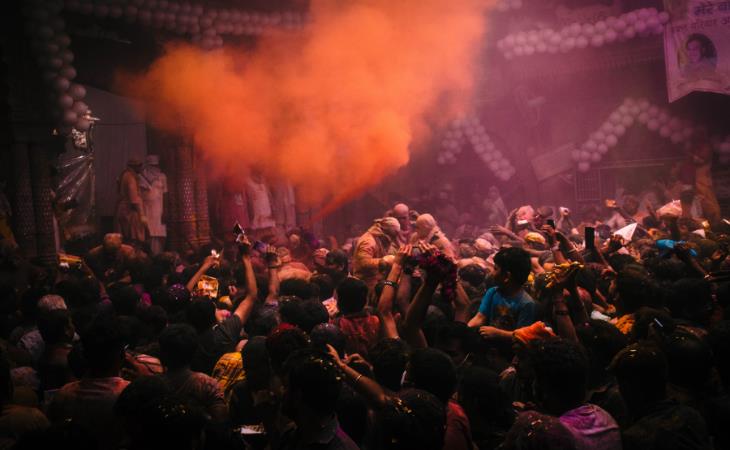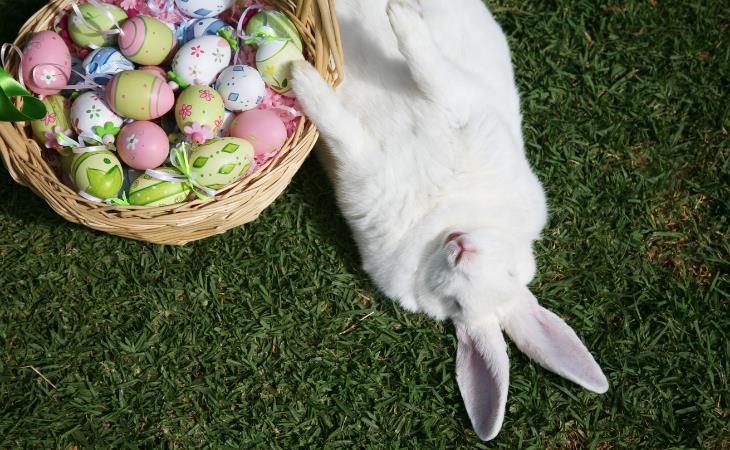While it might be seen as common sense to clear out clutter accumulated during the winter months, spring cleaning has deeper cultural significance. Some theories link this tradition to Nowruz, the Persian New Year, which coincides with the onset of spring. The celebration involves exchanging old belongings for new ones to symbolize the "rebirth of nature." Alternatively, Jewish customs observe spring cleaning as a time to remove yeast-based foods from the household in preparation for Passover.
2. The Easter Bunny
The Easter Bunny, an enduring symbol of spring, traces its origins to ancient German paganism. Rabbits have long been associated with fertility and new life, making them a natural symbol for celebrations of renewal and rebirth during the spring season. In German mythology, the Easter Bunny is depicted as an egg-laying hare called Osterhase or Oschter Haws. This beloved creature made its way to America in the 1700s with German immigrants who settled in Pennsylvania.
3. Painted eggs
There are several theories about the origin of Easter egg decorations. According to the most famous and widely believed one, the origins of this fun custom can be traced back to ancient Egyptian and Sumerian cultures. It's said that several thousand years ago, the Egyptians and Sumerians would honor their dead with adorned ostrich eggs, and this practice eventually evolved into the tradition of Easter egg decoration that we know today.
4. Egg dancing
Among the lesser-known egg-related spring customs is the egg dance, a lively ritual where participants joyfully dance around baskets filled with eggs, aiming to avoid breaking any. Possibly the first documented mention of the egg dance dates to 1498, following the engagement and subsequent marriage of the Duke of Savoy and the Archduchess of Austria.
5. Easter candy
The tradition of receiving chocolates and candies from the Easter Bunny is a more recent custom. Its origins can be traced back to the Victorian era, a time when advancements in candy manufacturing allowed for the creation of intricate, hollow chocolate figures. These innovative treats, though still maintaining their quality, became more affordable and easier to produce, leading to a surge in demand for confectionery products during the Easter season. As the tradition of giving Easter candy evolved, chocolate bunnies, eggs, and other themed confections became synonymous with the festivities of the holiday.
6. Wet Monday
Known by various names such as lany poniedziałek, Śmigus-Dyngus, or the beloved Dyngus Day, Poland's vibrant Easter Monday custom transforms neighborhoods into scenes of merry mayhem. Here, people of all ages, armed with buckets of water, gleefully soak one another, often catching their targets unaware and still tucked in bed. Some believe that this tradition is associated with the botanical reverence of ancient European pagans, who saw in the drenching of friends a symbolic homage to the Corn Mother's fertility.
7. Holi

Holi is a Hindu festival celebrated in India and other parts of the world to welcome spring and say goodbye to winter.
Holi isn't just any other festival; it's a celebration of good over evil, of justice prevailing over tyranny. The festival is rooted in ancient Hindu mythology, particularly the story of Prahlada and Holika. Prahlada, a just and noble boy, refused to bow down to his tyrannical father, King Hiranyakashipu. The king then employed his sister, Holika, to do away with Prahlada. But the malicious Holika's efforts to trick Prahlada into stepping into a burning pyre backfired, and it was she who was burned alive by the grace of Lord Vishnu.
The bonfire, a tradition of Holi, is a reminder of spiritual justice. Celebrated every March, Holi enjoys its own rich backstory, and its traditions, such as bonfires and water fights, are fervently observed year after year.
Read More About Spring:
Spring Is Here: 8 Spring Flowers You Can Plant Right Now
These FUNNY Spring Jokes Will Blossom Your Mood!
16 Wonderful Places That Come to Life in the Spring
15 Spring Cleaning and Organization Hacks
Got a Case of Spring Allergies? Here’s What You Need to Do





